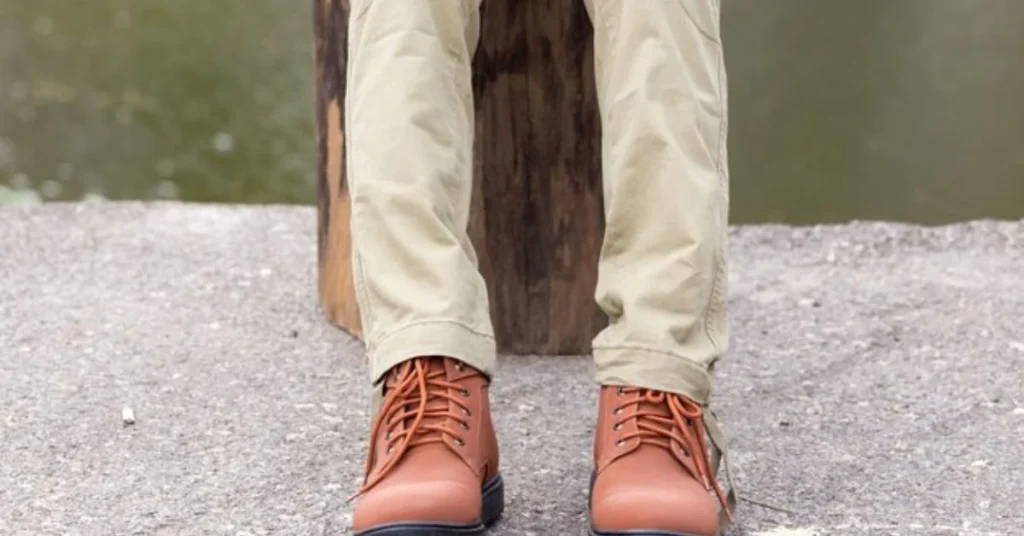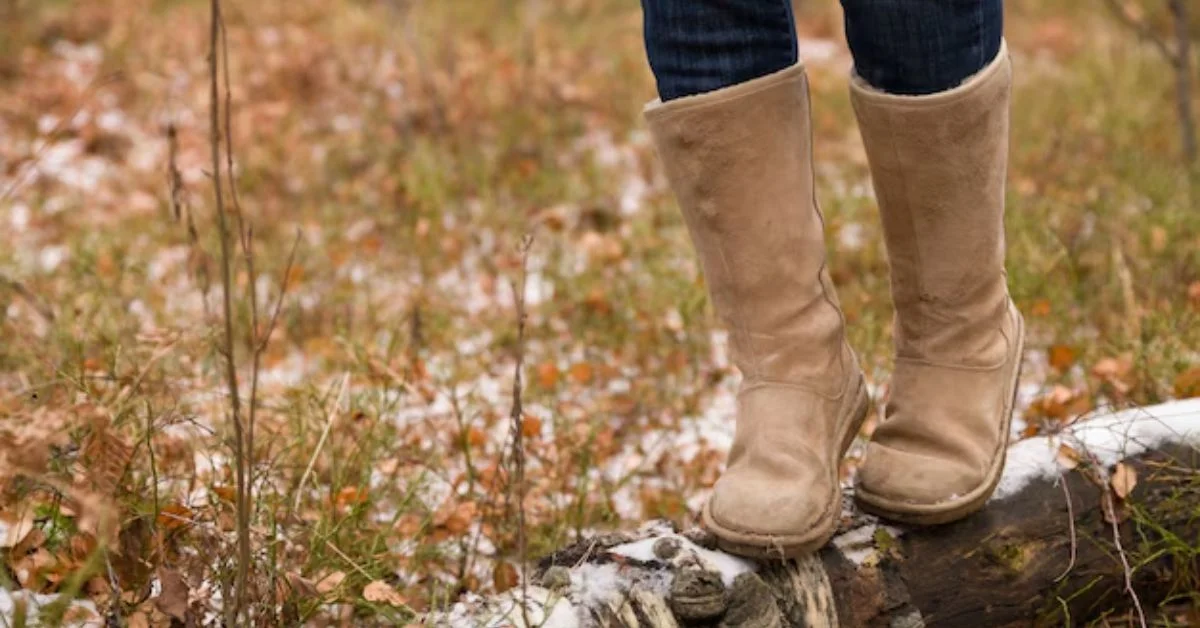In recent years, barefoot boots have emerged as a popular footwear choice, not merely for their aesthetic appeal but also for their numerous health benefits. Designed to provide a natural and comfortable walking experience, barefoot boots offer protection while promoting overall foot health. This comprehensive guide explores the features, benefits, and different types of barefoot boots, catering to everyone from outdoor enthusiasts to military personnel and everyday wearers.
What Are Barefoot Boots?
Barefoot boots are a type of footwear that prioritizes a natural foot position, allowing your feet to move more freely. Unlike traditional boots, which often have a significant heel drop and additional cushioning, barefoot boots have a zero-drop design. This means there is no height difference between the heel and the forefoot, promoting a more natural walking and running gait.
Key Features of Barefoot Boots
- Zero Heel Drop: The most distinctive feature of boots is their zero heel drop. This design keeps the foot flat and encourages proper posture, which can help alleviate back and joint pain.
- Flexible Soles: These are designed with flexible soles that allow for natural foot movement. This flexibility helps strengthen foot muscles and improves balance and stability.
- Breathable Materials: Many barefoot boots are made from breathable materials that keep your feet dry and comfortable. This is especially important for those who wear them for extended periods.
- Lightweight Design: Unlike traditional boots, boots tend to be lightweight, making them easy to wear and reducing fatigue during long walks or hikes.
- Traction and Protection: Despite their minimalist design, boots offer adequate traction and protection against rough terrain, making them suitable for various outdoor activities.
Benefits of Wearing Barefoot Boots
1. Improved Foot Health
One of the primary advantages of barefoot boots is their contribution to foot health. Traditional footwear often constricts the natural movement of the foot, leading to a range of issues, such as bunions and plantar fasciitis. Barefoot boots, with their spacious toe boxes and flexible construction, allow your feet to spread out naturally, reducing the risk of these problems.
2. Enhanced Posture
Wearing barefoot boots can improve your posture. The zero-drop design encourages a more aligned stance, reducing strain on the lower back and improving overall body mechanics. Proper posture can lead to reduced discomfort and fatigue, especially for those who spend long hours on their feet.
3. Strengthening Foot Muscles
This promote the use of intrinsic foot muscles that are often underutilized when wearing traditional shoes. By allowing your feet to move naturally, you engage these muscles, helping to strengthen them over time. This can lead to better stability and a lower risk of injuries.
4. Increased Sensory Feedback
The minimalist design of barefoot boots provides increased sensory feedback from the ground. This heightened awareness can improve your balance and coordination, making you more agile and aware of your surroundings.
5. Versatility for Different Activities
Whether you’re hiking in the mountains, walking on the beach, or simply running errands, it offer versatility. Their robust design makes them suitable for various environments, from urban settings to rugged trails.
6. Long-Term Comfort
While it may take some time for your feet to adjust to boots, many wearers report increased comfort over time. The lack of cushioning allows your feet to adapt and become accustomed to the natural terrain, leading to a more comfortable walking experience.

Different Types
These come in a variety of styles, catering to different preferences and activities. Here are some popular options:
1. Barefoot Boots for Men
Men’s barefoot boots are designed to provide the same benefits as women’s options, with a focus on durability and performance. Brands offer models specifically engineered for various activities, including hiking, running, and everyday wear. Look for features like waterproofing and rugged soles for outdoor adventures.
2. Barefoot Boots for Women
Women’s barefoot boots often feature a more tailored fit and stylish designs, ensuring that comfort doesn’t come at the expense of fashion. With options ranging from casual boots to performance footwear, women can enjoy the health benefits of boots while looking good.
3. Barefoot Boots Military
Military-style boots are built for tough conditions while maintaining a lightweight and flexible design. These boots are crafted from durable materials to withstand harsh environments while providing the comfort and support that soldiers need on their missions.
4. Popular Choices and Recommendations
When searching for the best barefoot boots, it can be helpful to consult resources like Reddit, where users often share their experiences and recommendations. Searching “barefoot boots reddit” can lead to valuable insights from fellow enthusiasts, helping you make informed decisions based on real user experiences.
How to Choose the Right Barefoot Boots
Choosing the right boots involves considering various factors to ensure you find the perfect fit for your needs. Here are some key considerations:
1. Purpose
Determine the primary purpose of the boots. Are you looking for something for daily wear, outdoor adventures, or specific activities like running or hiking? Identifying your needs will help narrow down your options.
2. Fit and Sizing
Fit is crucial when it comes to barefoot boots. Look for a design that allows for natural toe splay, with a roomy toe box. It’s also essential to consider the length and width of the boots. Many brands offer specific sizing charts, so be sure to measure your feet accurately.
3. Material Quality
Examine the materials used in the construction of the boots. High-quality materials will provide durability and breathability. Waterproof options may be beneficial if you plan to wear them in wet conditions.
4. Traction and Sole Design
Consider the type of sole and traction the boots offer. A good grip is essential for outdoor activities, especially on slippery or uneven terrain. Look for soles that are designed to provide traction while still allowing for natural foot movement.
5. Weight
Lightweight boots are preferable, especially if you plan to wear them for extended periods. Heavier boots can lead to fatigue, so opt for a model that balances durability and weight.
Transitioning to Barefoot Boots
If you’re new to barefoot footwear, it’s essential to transition gradually. Here are some tips for a smooth adjustment:
1. Start Slow
Begin by wearing your barefoot boots for short periods. Gradually increase the duration as your feet adapt to the new design. This will help prevent discomfort or injury.
2. Pay Attention to Your Feet
Listen to your body during the transition. If you experience pain or discomfort, it may be a sign that you need to slow down or adjust your usage.
3. Strengthen Your Feet
Incorporate foot-strengthening exercises into your routine. Activities like toe curls and balance exercises can help build the muscles that support your feet.
4. Maintain Proper Form
Focus on your walking or running form. Ensure that you are landing on your midfoot or forefoot, as this is more in line with the natural biomechanics encouraged by barefoot boots.
Conclusion
Barefoot boots represent a significant shift in footwear design, offering a multitude of benefits that cater to modern lifestyles. With their emphasis on natural movement, improved posture, and overall foot health, barefoot boots are becoming a preferred choice for many. Whether you’re an athlete, a military personnel, or simply someone looking for comfortable everyday footwear, there is a barefoot boot that can meet your needs. By understanding the features, benefits, and various styles available, you can make an informed decision and enjoy the long-term advantages of wearing barefoot boots.
FAQs
1. What are barefoot boots?
These are footwear designed to promote natural foot movement with a zero heel drop, flexible soles, and a spacious toe box. They are intended to enhance comfort, posture, and overall foot health.
2. Are barefoot boots suitable for all types of activities?
Yes, these are versatile and can be used for various activities, including hiking, walking, running, and everyday wear. However, it’s essential to choose a model that is specifically designed for your intended activity.
3. How do I choose the right size for barefoot boots?
To choose the right size, measure your feet accurately and refer to the sizing charts provided by the brand. Look for a fit that allows for natural toe splay and does not constrict your foot.
4. Can barefoot boots help with foot pain?
Yes, it can help alleviate foot pain by encouraging a natural foot position and promoting the strengthening of foot muscles. However, it’s important to transition gradually and listen to your body.
5. Are there specific barefoot boots for military use?
Yes, there are barefoot boots specifically designed for military use. These models are built to withstand tough conditions while offering the comfort and flexibility needed for active duty.
6. Where can I find recommendations for barefoot boots?
You can find recommendations for boots on platforms like Reddit, where users share their experiences and insights. Searching for “barefoot boots reddit” can lead to valuable discussions and reviews.









